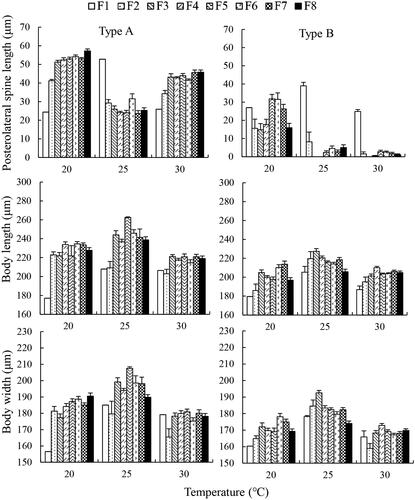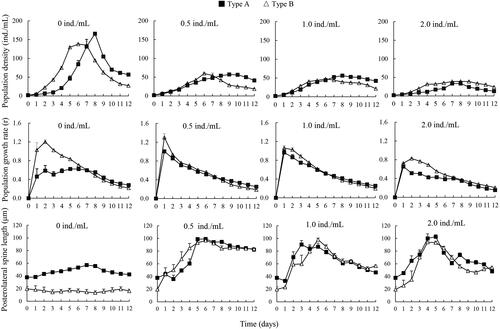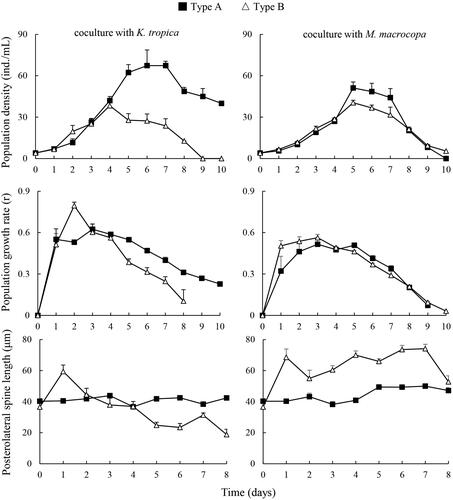Figures & data
Figure 1. Posterolateral spine length, body length and width of the stem females and their parthenogenetic offspring of two Brachionus calyciflorus types cultured at three temperatures (mean ± SE).

Table 1. Three-way ANOVA of temperature, type and generation on posterolateral spine length in Brachionus calyciflorus.
Table 2. Three-way ANOVA of food density, type and generation on posterolateral spine length, body length, and width in Brachionus calyciflorus.
Figure 2. Posterolateral spine length, body length and width of the stem females and their parthenogenetic offspring of two Brachionus calyciflorus types cultured at three food densities (mean ± SE).

Figure 3. Population growth and posterolateral spine length of two Brachionus calyciflorus types cultured at different concentrations of Asplanchna brightwelli kairomone (mean ± SE).

Table 3. Effects of type and Asplanchna brightwelli kairomone on maximum population density, maximum population growth rate and posterolateral spine length of Brachionus calyciflorus (Two-way ANOVA).
Figure 4. Population growth and posterolateral spine length of two Brachionus calyciflorus types cocultured with Keratella tropica and Moina macrocopa (mean ± SE).

Table 4. Two-way ANOVA of competitive pressure (Keratella tropica) and type of Brachionus calyciflorus on maximum population density, maximum population growth rate and posterolateral spine length of B. calyciflorus.
Table 5. Two-way ANOVA of competitive pressure (Moina macrocopa) and type of Brachionus calyciflorus on maximum population density, maximum population growth rate and posterolateral spine length of B. calyciflorus.
Data availability statement
All data have been included in this manuscript and supplementary materials.
